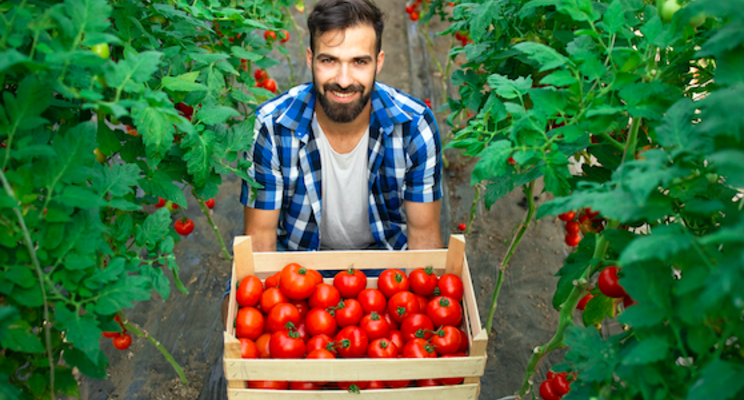How does CO2 fertilisation work in the greenhouse?
Added on 21 October 2021

Raising and cultivating ornamental and edible plants in greenhouses enables nurseries and farms to produce their products independently of the season and with consistent quality. The primary goal in greenhouse cultivation is to provide ideal growing conditions by optimally regulating climatic conditions, and increasing productivity as a result. In addition to the right humidity and temperature, plants need carbon dioxide to flourish. Higher yields can be achieved by artificially increasing the CO2 concentration in the greenhouse, especially for vegetables. This offers greenhouse operators an enormous competitive advantage compared to outdoor cultivation.
Achieving Higher Yields with CO2 Fertilisation
Carbon Dioxide Promotes Plant Growth
Plants use photosynthesis to produce glucose, which they need to grow. The "basic ingredients" for this biochemical process are light, water and carbon dioxide.
If plants cannot access enough CO2, they produce less glucose and grow more slowly. Conversely, more CO2 has a positive effect on plant growth. A high CO2 concentration makes plants grow faster, promotes root formation, and ensures earlier flowering and higher yields.
Therefore, in greenhouses the CO2 content is artificially increased by what is known as CO2 fertilisation (or CO2 fumigation). This can significantly increase the productivity and quality of the cultivated plants. Especially in the low-light season, CO2 fertilisation is useful because it also enhances the effect of artificial light and thus counteracts the natural lack of light.
Types of CO2 Fertilisation
In practice, two basic technical solutions are used for CO2 fertilisation:
- CO2 generators (CO2 cannons) which combust natural gas or liquid gas to boost the CO2 concentration. The heat generated during combustion is also used to heat the greenhouse at the same time.
- Carbon dioxide systems that introduce pure gas (technical carbon dioxide) from gas cylinder bundles or gas tanks into the greenhouse via a piping system. The approaches to controlling the gas supply can be anything from manual to fully automated (taking into account the prevailing CO2 concentration, lighting conditions and ventilation).
How much CO2 is needed depends on the greenhouse volume, its tightness and the natural or regulated air exchange. The level of CO2 concentration varies depending on the plant species. As a rule, the values are in the range of 600 to 1200 ppm. The basic rule is: the higher the mass growth of a plant, the higher the CO2 concentration. Vegetables therefore benefit more from CO2 fertilisation than ornamental plants, for example.
Read more on Agritech Tomorrow
Photo created by aleksandarlittlewolf - www.freepik.com
Source: Agritech Tomorrow
More news















